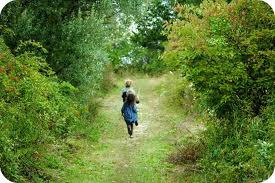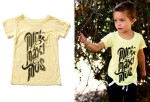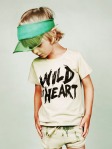
Imagine the soft kiss of a willow tree’s branch brushing across your cheek as you gallop carefree across the gelatinous grass gently forming in between your toes, or the tantalizing taste of the fresh sea breeze encapsulating your sense of freedom as it wisps around your face fanning your hair through the wind. Perhaps this takes you back to a childhood memory of a family holiday by the sea or the memory of your family farmhouse that often equated to hours of carefree outdoor play, memories in which I cherish from my childhood and wouldn’t give up for the world. I grew up on a small deer farm just outside of a little country town called Berry 2 hours south of Sydney, and remember the feeling of climbing trees, trekking to the creek or ‘shed,’ riding bikes, getting dirty, getting stuck and sometimes getting hurt but surviving.
Now Imagine the hot breath of a child panting along side you as your feet canter across the stiff, rigid surface of the carpet beneath your feet and then feeling the sensation of your joints jerking from the sudden jolt of your body being forced to suddenly stop before you collide with the opposing wall or fence keeping you captive as you play in an area less than five metres squared. Perhaps this brings back childhood memories or visions of your own child. These are the realities of indoor and outdoor play, the latter being something our children are being heavily deprived of according to numerous studies and surveys conducted in recent years. In fact according to Environmental Psychologist Kathleen Bagot and a recent study, over seven-in-ten adults played outside daily as kids with a dwindling one-in-ten kids playing outside once a week or less today, as well as less than 20% of children having climbed trees compared to 60% of the adults surveyed (Lakey, K “Tune Up The Brain; turf them outside” Kids on the Coast, Issue 42 Dec/Jan 2013).
Is this really our reality? Have we sacrificed our children’s ability to develop independence, learn from their mistakes, build confidence and their imagination through ‘green play’ for a heavier controlled lifestyle fuelled by a higher standard of living and the apparent ‘need’ for more things material and thus adopted a new form of ‘shadow’ parenting that may temporarily prevent our children from getting hurt but cost them a lot more in the future? I won’t lie, I am privy to this type of parenting on occasion, as it’s our natural instinct as parents to want to protect our children, but with more and more studies showing the developmental and psychological benefits of outdoor play and physical activity including lowering stress levels, developing better motor skills, balance and fewer sick days, as well as cognitive benefits like better attention, concentration and self-discipline (Lakey, K “Tune Up The Brain; turf them outside” Kids on the Coast, Issue 42 Dec/Jan 2013), why aren’t we as a society pushing for our children to be more heavily involved in outdoor activities or just simple outdoor play?
For boys in particular physical activity is a crucial part of their development. The benefits of sport for boys have been proven to develop fundamental qualities such as respect, relationship building, team qualities as well as introducing key role models throughout those troubled teenage years (Biddulph, S “Raising Boys;” 3rd ed;Ch.9;pg187). Having a brain that works slightly different to that of girls means boys react differently in different situations. Daycare or childcare for example is not highly recommended for boys under the delicate age of 3 as studies have shown boys are more prone to separation anxiety which means extended stays in daycare can see damage done to their development, increase in misbehaviour especially in the form of aggression and disobedience as well as weaken their relationship with their parents due to feelings of abandonment (Biddulph, S, 3rd Ed;Ch.2;pg 15), the severity of these outcomes obviously depends on time spent in childcare. However, little choices like limiting time in the care of others, selecting quality daycare or preschools with trained teachers can play it’s part when children are older (Biddulph, S, 3rd Ed;Ch.2;pg 16), or increased outdoor play and activities can help counter balance boys surges of testosterone (in older boys) and there sudden bursts of physical energy that they regularly exert.
I know it’s been heard a thousand times before and could arguably be conceived as the movement of our era, but there is a lot to be said about living a greener lifestyle. Yes it may mean you need to invest more time in your children and take them out doors more regularly, enrol them in an out-door activities class, sign them up for little nippers or football, buy that yearly pass to the zoo or animal park, ultimately spend a bit more time with your children now to get a while lot more out of your children later.
Try converting other components of your life into a greener way of thinking also as a means of benefitting every aspect of your being such as eating organic or wearing organic clothing – or at least instilling these benefits into your children. With food stores such as Woolworth’s offering a range of organic alternatives to almost everything for only a small amount extra in most things – due to their purchase of Macro (an Australian organic company) means organic foods are now more accessable than ever! Better still take your kids out side for the morning and head to your local farmers market for their fresh produce and source some local children’s wear designers who can often be found to use vintage, organic or recycled fabrics to produce their garments. In fact with brands such as Mini & Maximus, mini rodini and Baobab offering 100% organic products, there really is no excuse as to why you should not at least attempt to incorporate some organic pieces into our boys wardrobes.



